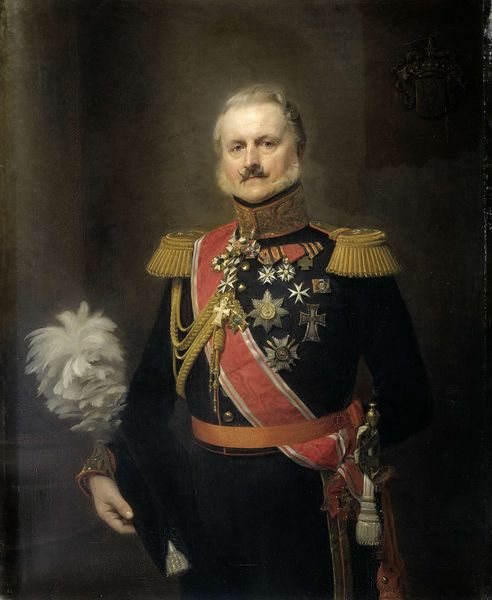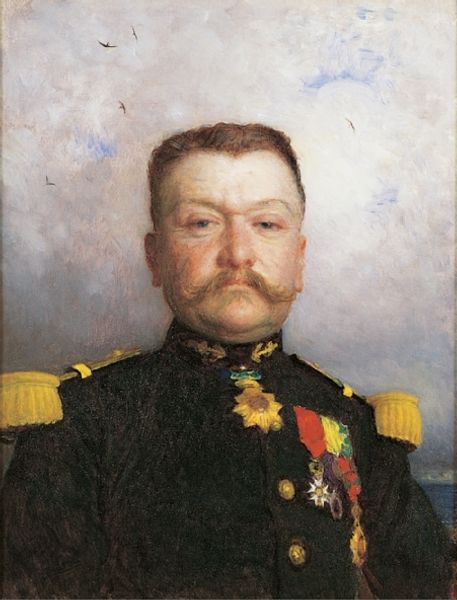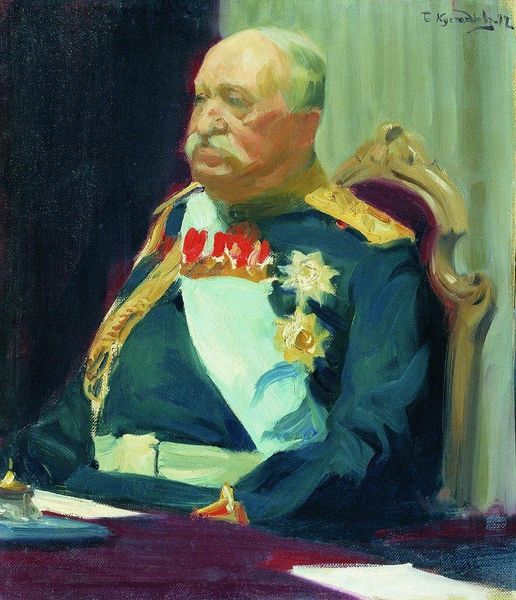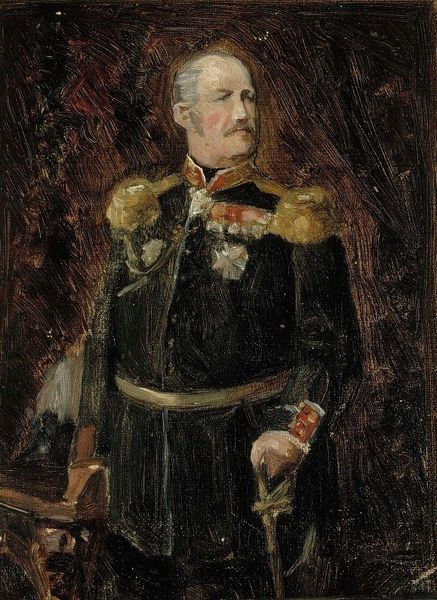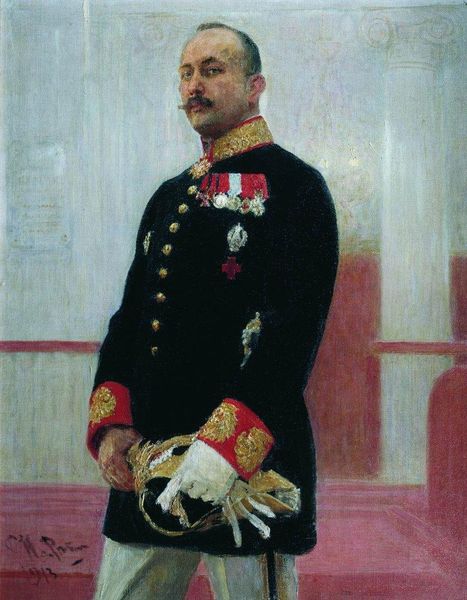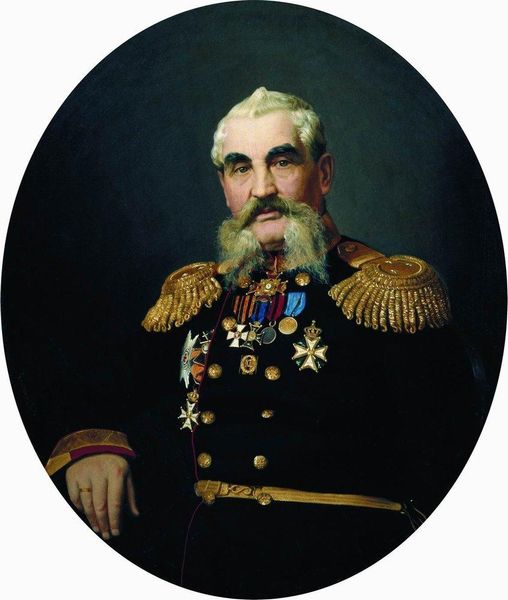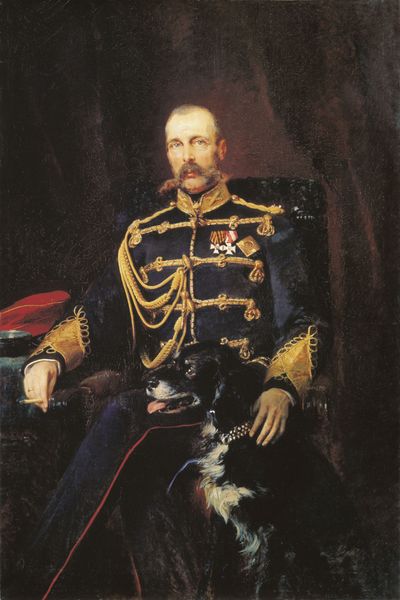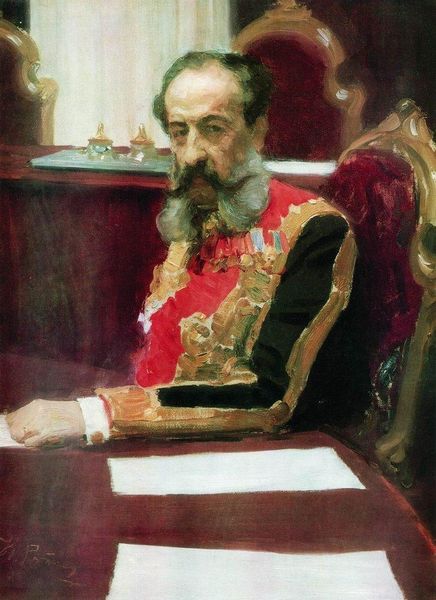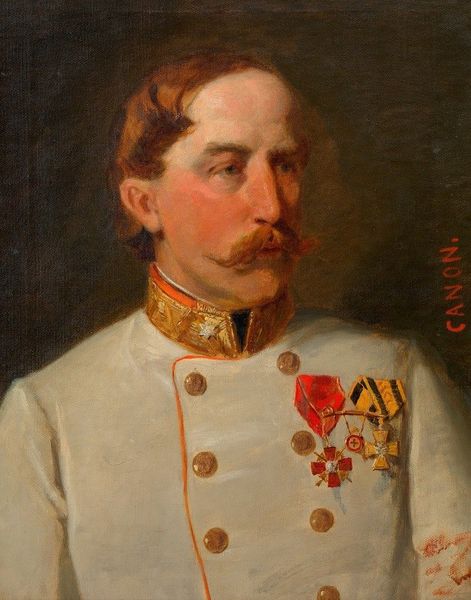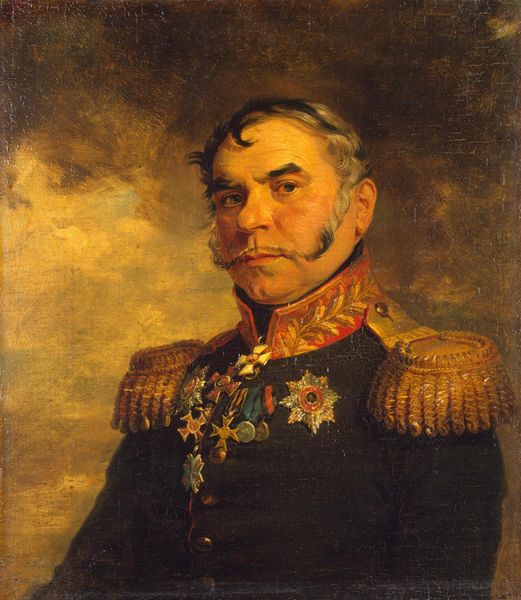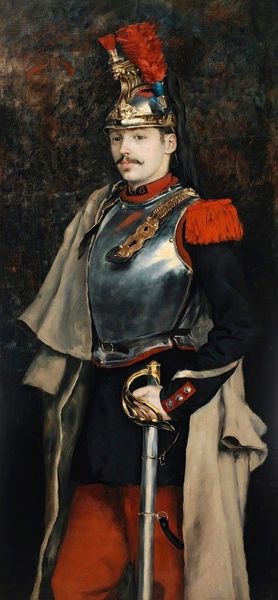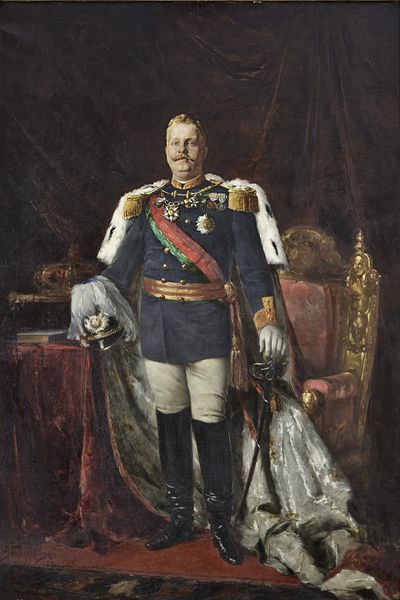
Portrait of member of State Council Grand Prince Mikhail Aleksandrovich Romanov. Study. 1901
0:00
0:00
painting, oil-paint
#
portrait
#
painting
#
oil-paint
#
russian-avant-garde
#
history-painting
#
academic-art
#
modernism
#
realism
Dimensions: 70 x 58 cm
Copyright: Public domain
Curator: Welcome. Here we see Ilya Repin's 1901 oil study, "Portrait of a Member of State Council, Grand Prince Mikhail Aleksandrovich Romanov." Editor: It's strikingly austere. The dark palette and rigid posture immediately convey a sense of formality and perhaps even melancholy. Curator: Observe Repin's mastery of light and shadow. Note how the golden epaulettes and ornate decorations draw your eye, creating a visual hierarchy that reinforces the subject’s status. The details of his face, rendered with precision, project an air of aristocratic authority. Editor: And those decorations speak volumes, don't they? Medals are not just objects but symbols, rewards accumulated through service. Consider the labor involved in their production, the mining of the metals, the crafting of each piece—all reflecting power and privilege. Curator: True. Yet, one also senses a psychological depth that moves beyond mere representation. Look closely at his eyes: they hint at a more contemplative, even burdened, inner life, contrasting with the external display of power. Editor: The sketch-like quality adds an intriguing layer. It underscores the act of painting, reminds us of the artist's hand, the brushstrokes carefully layered on the canvas. Oil paint itself—a dense, malleable substance extracted and refined—becomes a powerful medium for both realism and commentary. Curator: Exactly. The use of such thick, expressive brushwork brings a tangible presence to the sitter and offers a unique contrast to the more meticulous portraits of the era. Editor: It highlights the material foundation of power. Repin’s artistic choices reveal the labor that upholds systems of hierarchy, questioning traditional notions of value and status. Curator: This portrait challenges us to see beyond the surface, urging us to interpret not just what is represented, but also how it is represented through skillful interplay between light and shadow and through dynamic painterly gestures. Editor: Repin’s “Study” invites us to contemplate the material processes through which identities and power are crafted and presented. Thanks for this compelling formal and contextual overview!
Comments
No comments
Be the first to comment and join the conversation on the ultimate creative platform.


